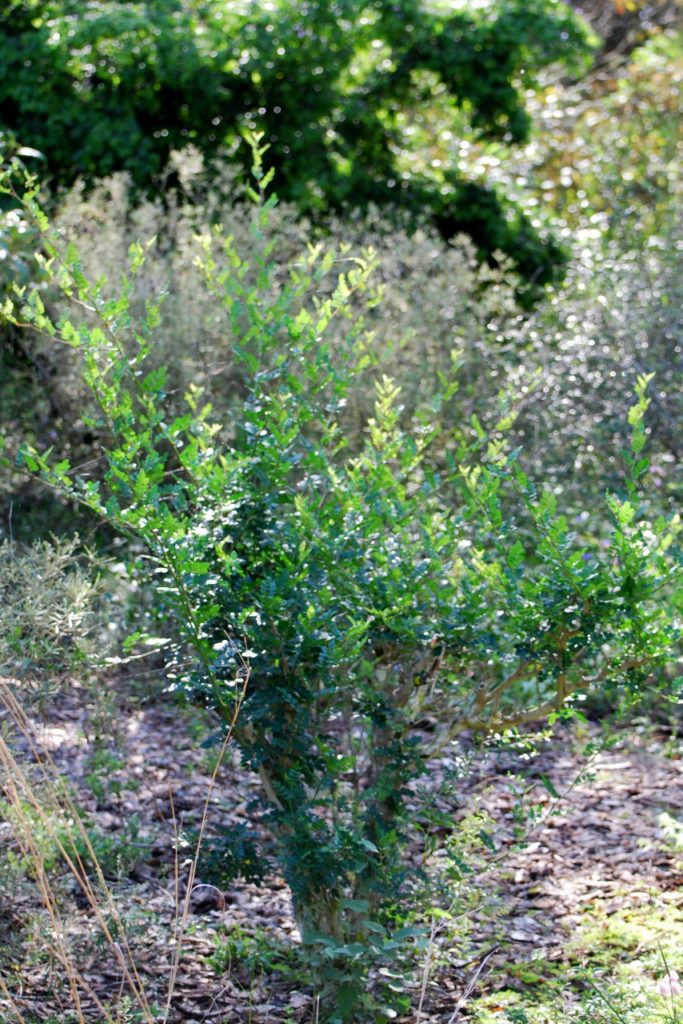
Wild Lime
Zanthoxylum fagara
Wild Lime is in the citrus family, yet the fruit is a black BB sized seed. These occur in clusters in the fall and are eaten by seed eating birds like cardinals. They can be crushed and fried in oil to give the oil a citrusy flavor. Remove the seed parts before using this oil.
Male and female flowers are found on separate plants, so plant several Wild Lime in order to be sure you’ll have the seeds for local cardinals. At least plant from a pot containing several seedlings if you only want one multitrunked specimen with male and female plants.
The small leaflets give this shrub or small tree the look of an Orange Jasmine. It can be grown as a hedge or small accent tree. Unfortunately the branches spread like a Brazilian Pepper, so give it lots of room if you don’t plan on cutting it back often.
Nothing makes a better security hedge than Wild Lime. I have found that a hedge of Wild Lime will look uniformly green. The thorns are the size of and are hooked like a cat’s claw. They tear the skin and should not be planted near where friendly people walk. It can be limbed up for people to pass under though.
Some salt air, drought, cold and poor soil are tolerated. This shrub can be found from the Keys to Volusia County and west of there.
This is the larval food for the giant swallowtail butterfly and possibly the endangered Schaus’ swallowtail butterfly of the Florida Keys. A combination of Wild Lime and Hercules Club will ensure that you have several giant swallowtail butterflies in the yard. You are not likely to have the Schaus’ swallowtail, even if you live in the Keys.
I have found this plant in cow pastures, scrub, coastal and inland hammocks and scrubby pine flatwoods.
A nice combination planting might include Saw Palmetto, Tough Bumelia, Simpson Stopper, Jamaica Caper, Black Ironwood, Willow Bustic, Scrub Red Bay, Beautyberry, Necklace Pod, Scrub Palmetto, Myrsine and Coralbean. Of course many other plants can be included.
Wild Lime is also one of the safest places for local birds to nest. Cats and other predators just can’t get through it.